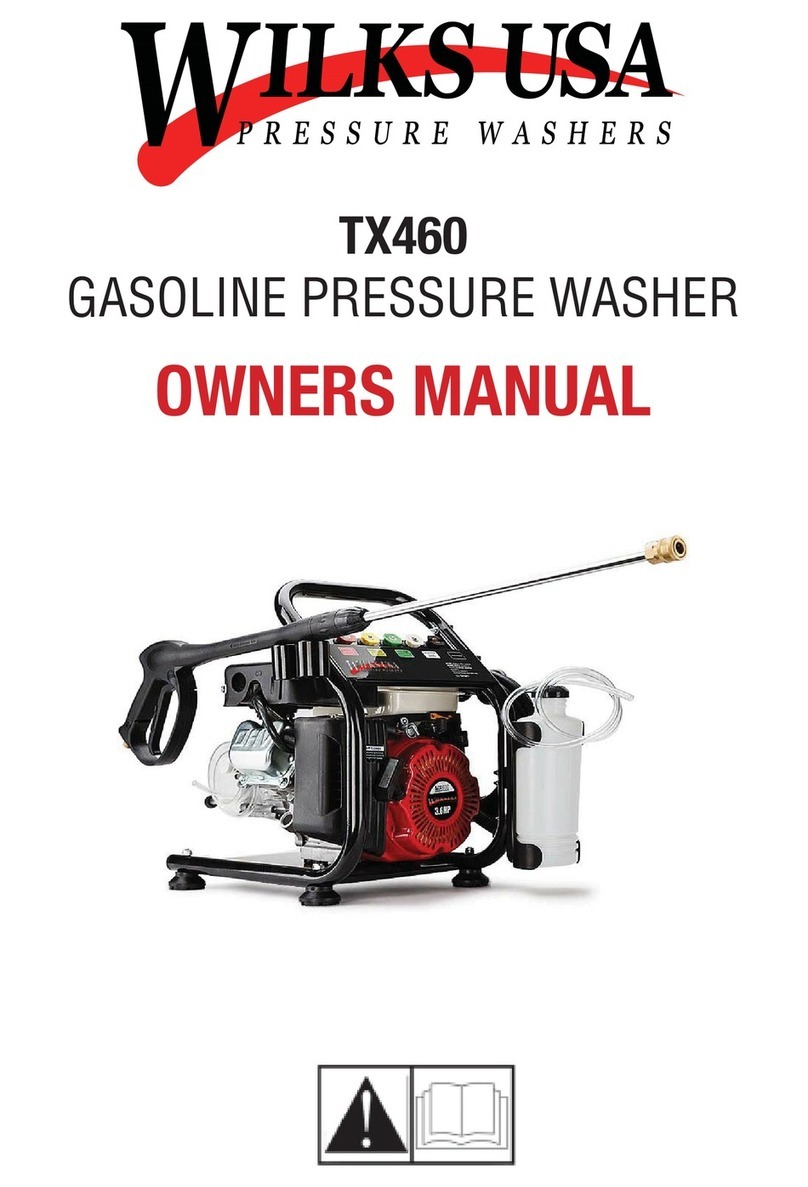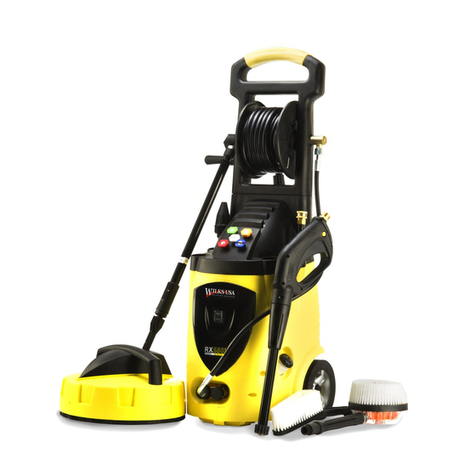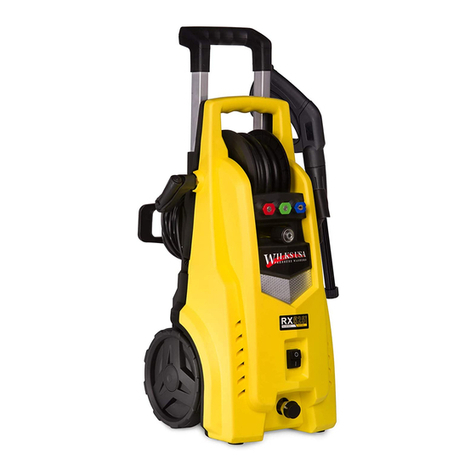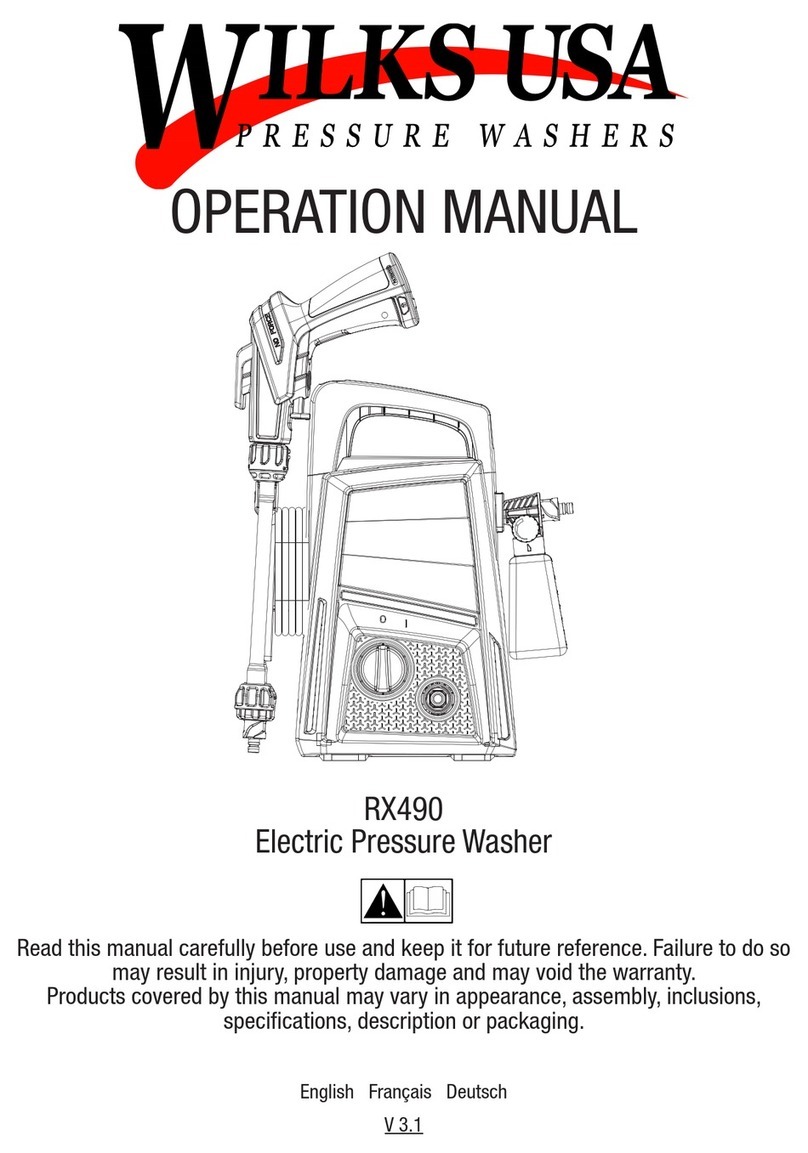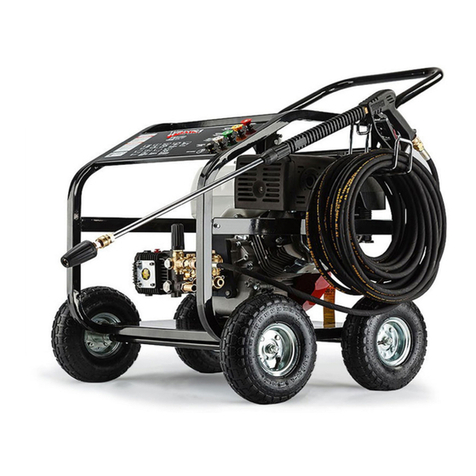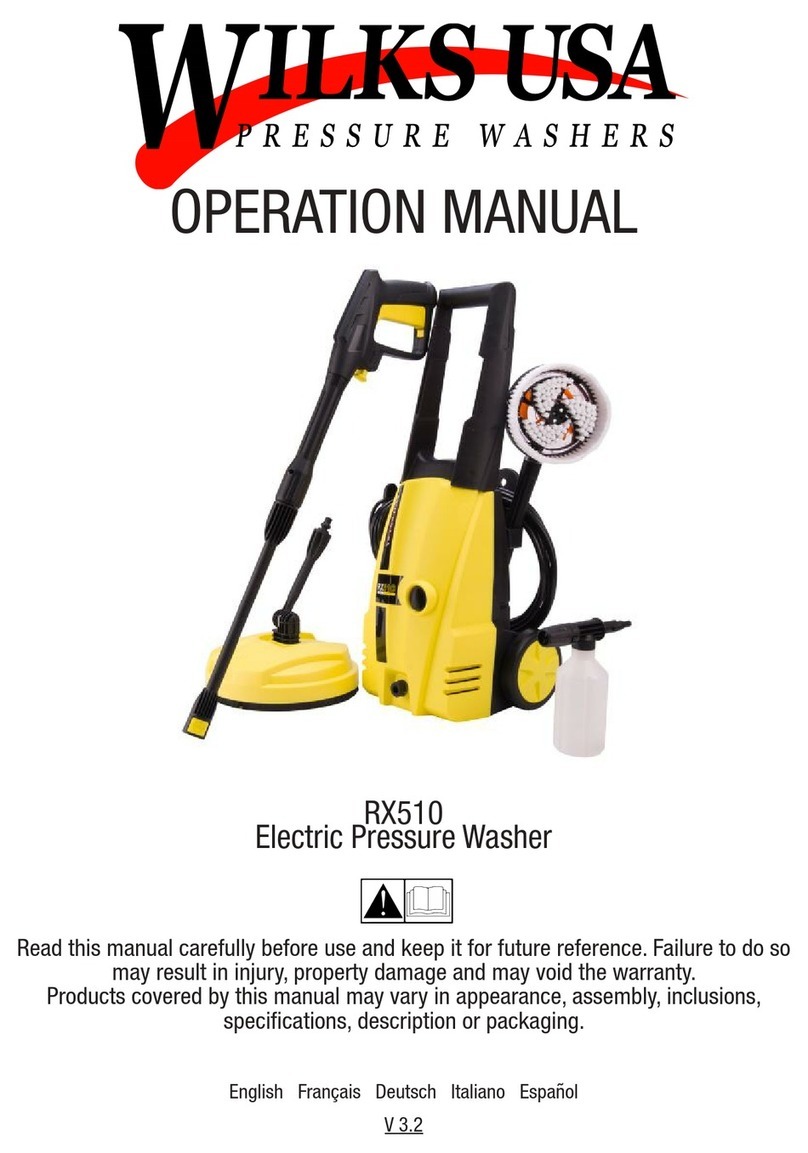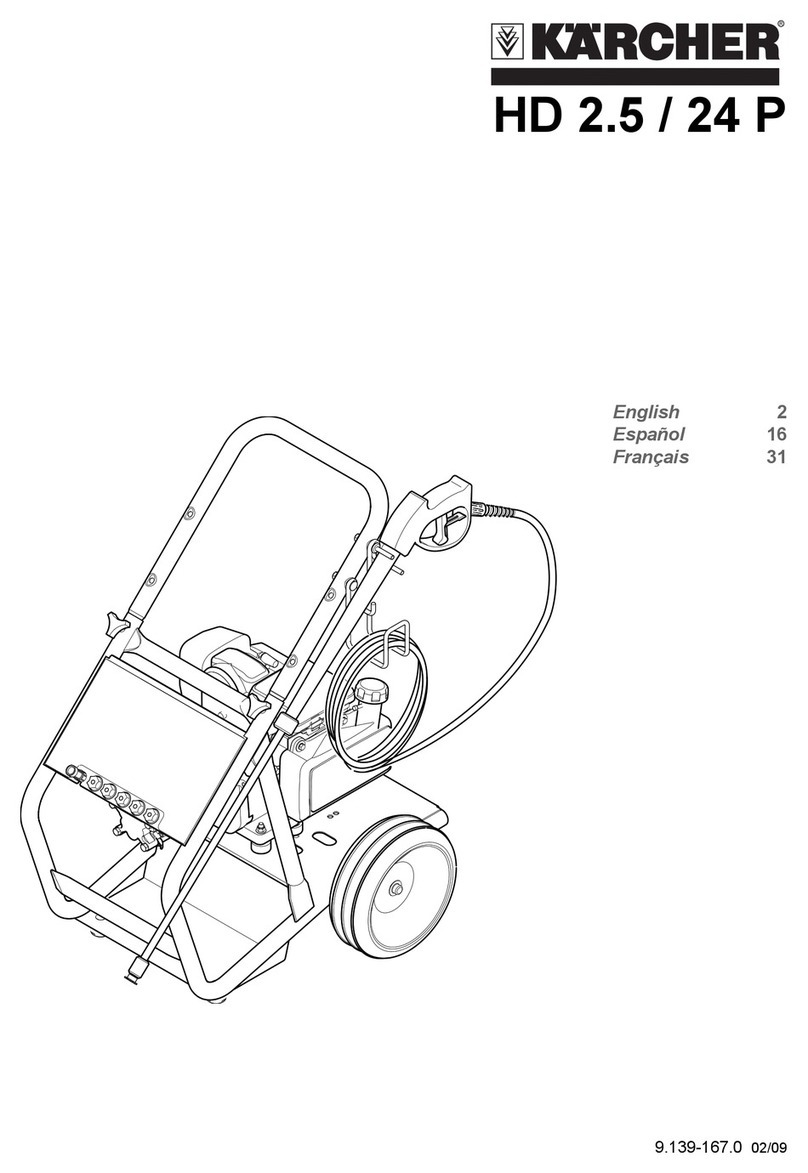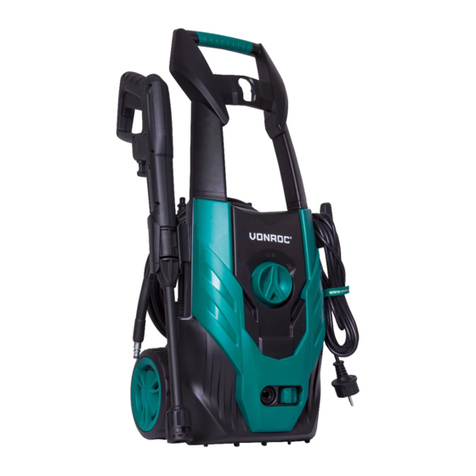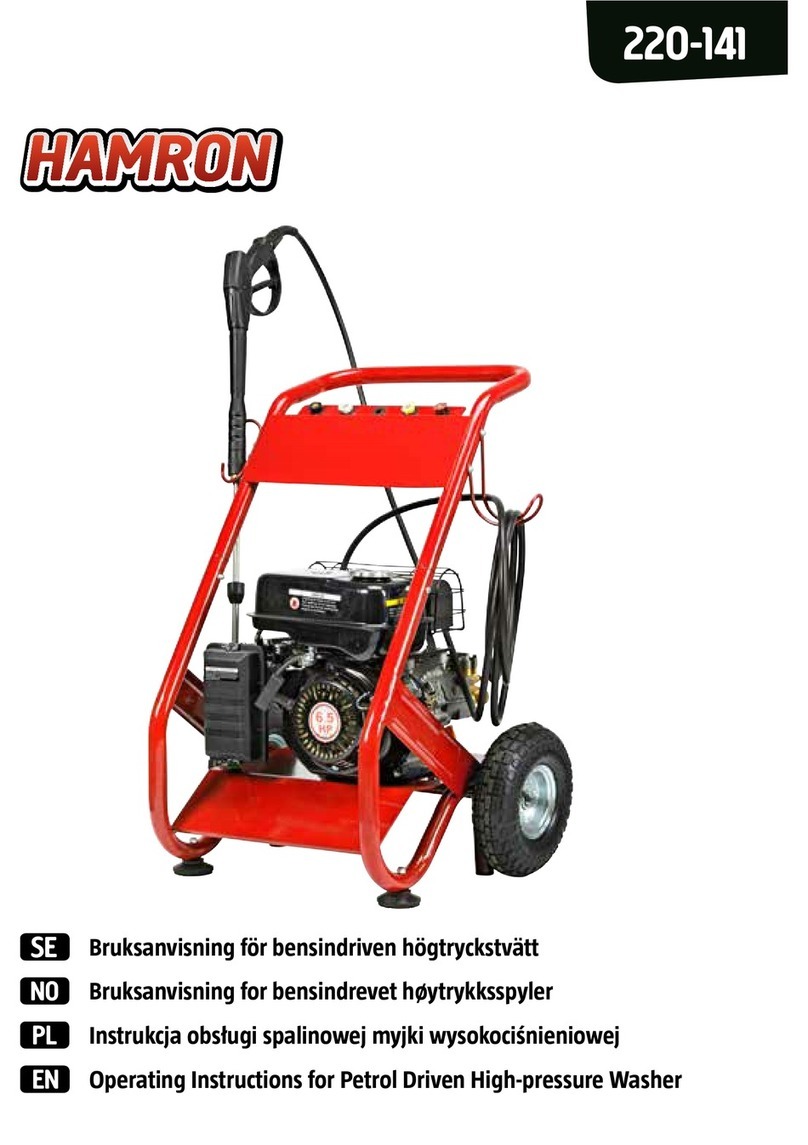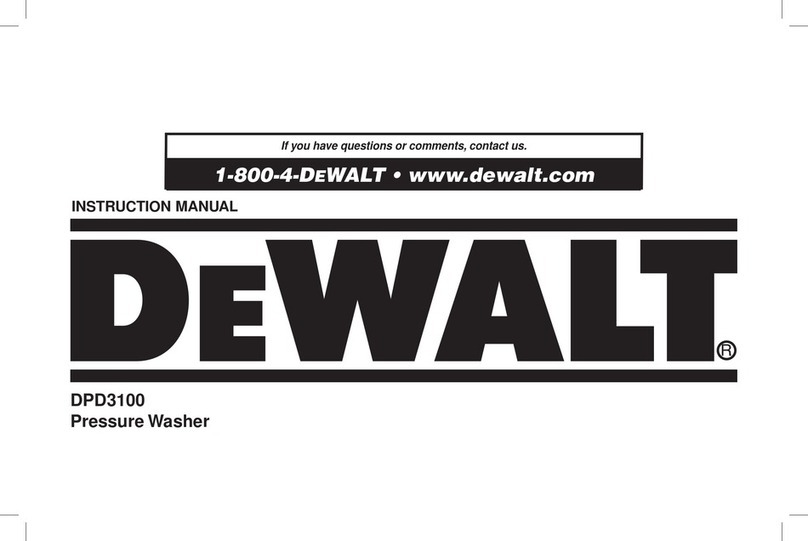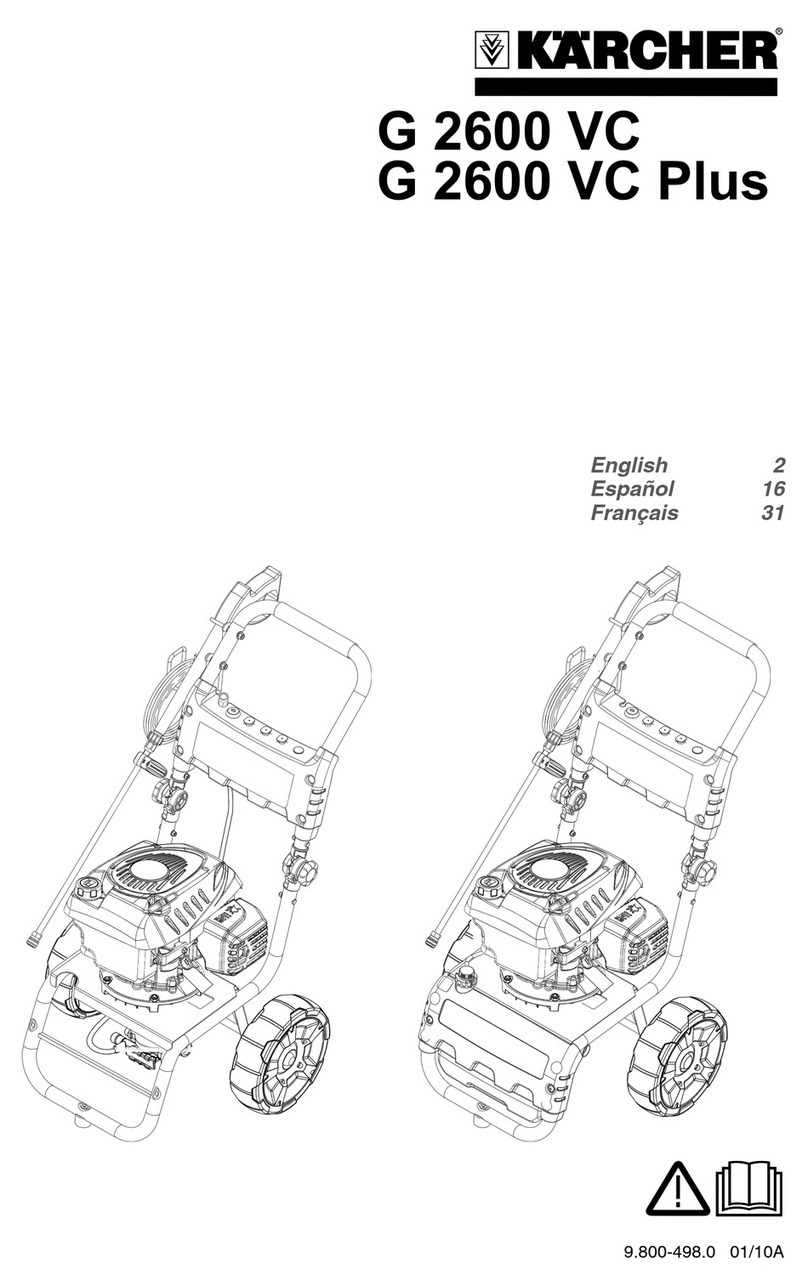
• Read instructions carefully before operating this product.
• This product is for outdoor use only.
• Keep bystanders away.
• Ensure the engine is stopped before carrying out adjustments,
cleaning or maintenance.
• Always turn off the engine and water supply when finished.
• Do not use the product if found to be damaged.
• Only use with detergents specified by the manufacturer. Other chemicals may compromise
the safety of the product.
• Do not direct the pressure jet towards mechanical parts containing lubricant grease.
• Clean vehicle tyres from a minimum of 50cm to avoid damage by the high pressure jet.
• Do not point high pressure jets at people, animals, live electrical parts or the product itself.
• Do not use accessories such as hoses and connections that are not advised by the manufacturer.
• Engage the high pressure safety catch located on the gun when not in use.
• Do not step/stand on the high pressure hose.
• Ensure the nozzle is securely attached before using the Product. High pressure can cause it to
be fired from the lance with considerable force, and could cause injury damage.
• Be ready for the kick-back force and the sudden torque on the spray assembly
when operating the trigger.
• A high pressure jet can remove paint and other surface finish. It can also damage
tarmac and grouting.
• Switch off completely when not attended.
• The hose is designed specifically for operation with high pressures. Take care to avoid damage
that may prevent correct operation of the product.
• This product is not to be used by children or anyone with reduced capabilities.
• Always completely unwind the high pressure hose prior to operation.
• Make sure that the machine is switched off before unwinding the high pressure hose,
and take care not to pull the machine over.
• Do not let the high pressure hose contact the hot engine exhaust.
• Do not use this product indoors.
• Keep exhaust emissions away from air intakes.
• Do not attempt to modify the product in any way.
• To ensure good operating condition arrange regular servicing from an authorising agent.
• Only use replacement parts supplied by the manufacturer
• Only use fresh,clean and good quality fuel in the engine.
• Never operate the engine without oil.
• Never refuel in close proximity to naked flames, sparks or other sources of ignition e.g. cigarettes.
• Do not refuel when the engine is hot.
• Wipe up and correctly dispose of any fuel spillage immediately with a suitable medium.
• Move away from the refuelling areas before restarting the engine. Store fuel for short periods
only in a suitable container away from heat and direct sunlight.
• Clean the pressure washer thoroughly after each use.
• Regularly check external nuts and fixings to ensure vibration caused by normal use has not
begun loosen them. Remove the spark plug ignition lead from the back of the spark plug and
position the lead to avoid accidental reconnection.
• Store the machine in a secure dry location out of reach of children.
• Empty the fuel tank before storage.
• Make sure to empty the product of any excess water from your hose or gun.
• Do not leave product in freezing conditions as this will cause damage the product.
GENERAL SAFETY INSTRUCTIONS
MAINTENANCE AND STORAGE
1
